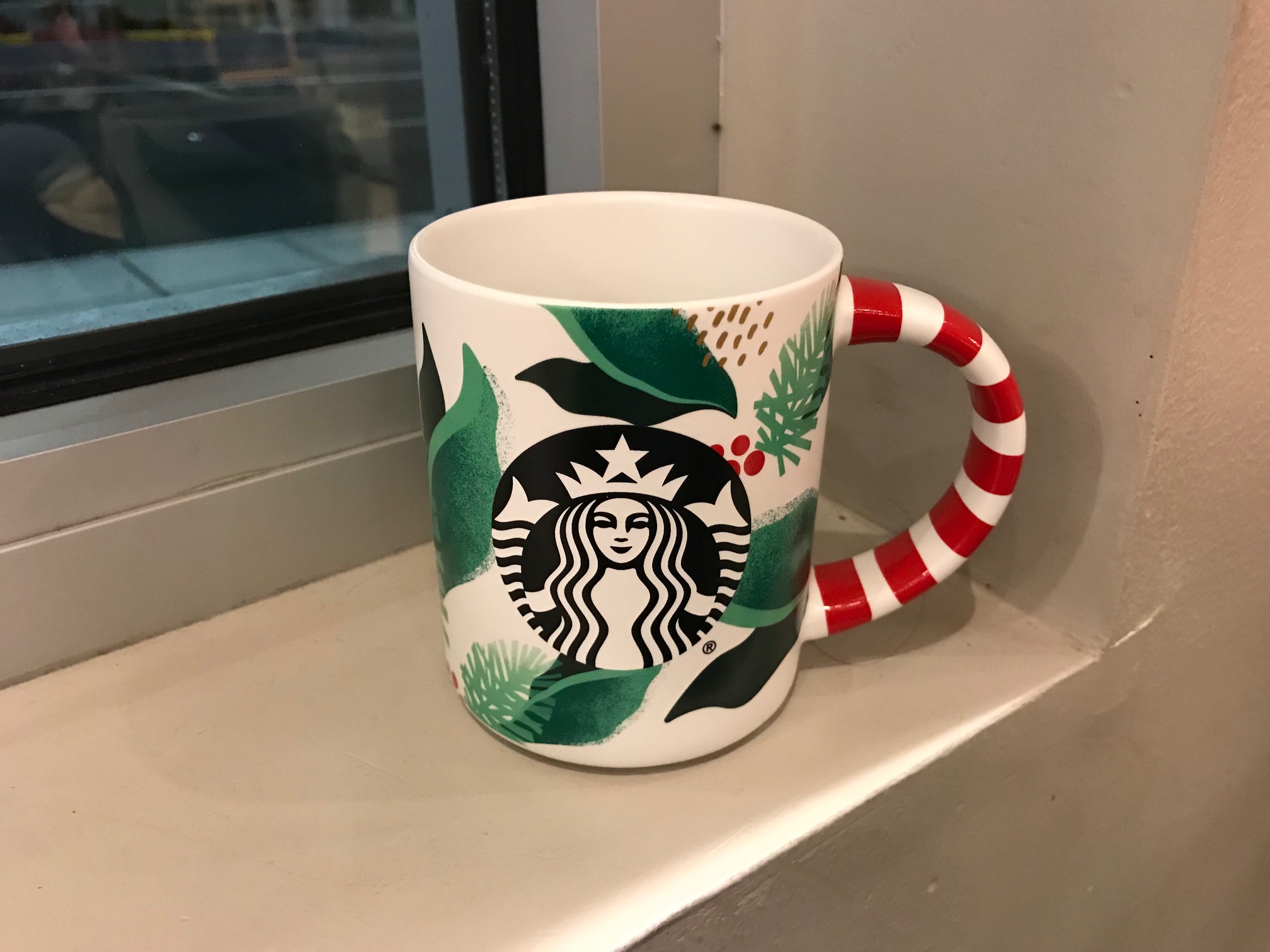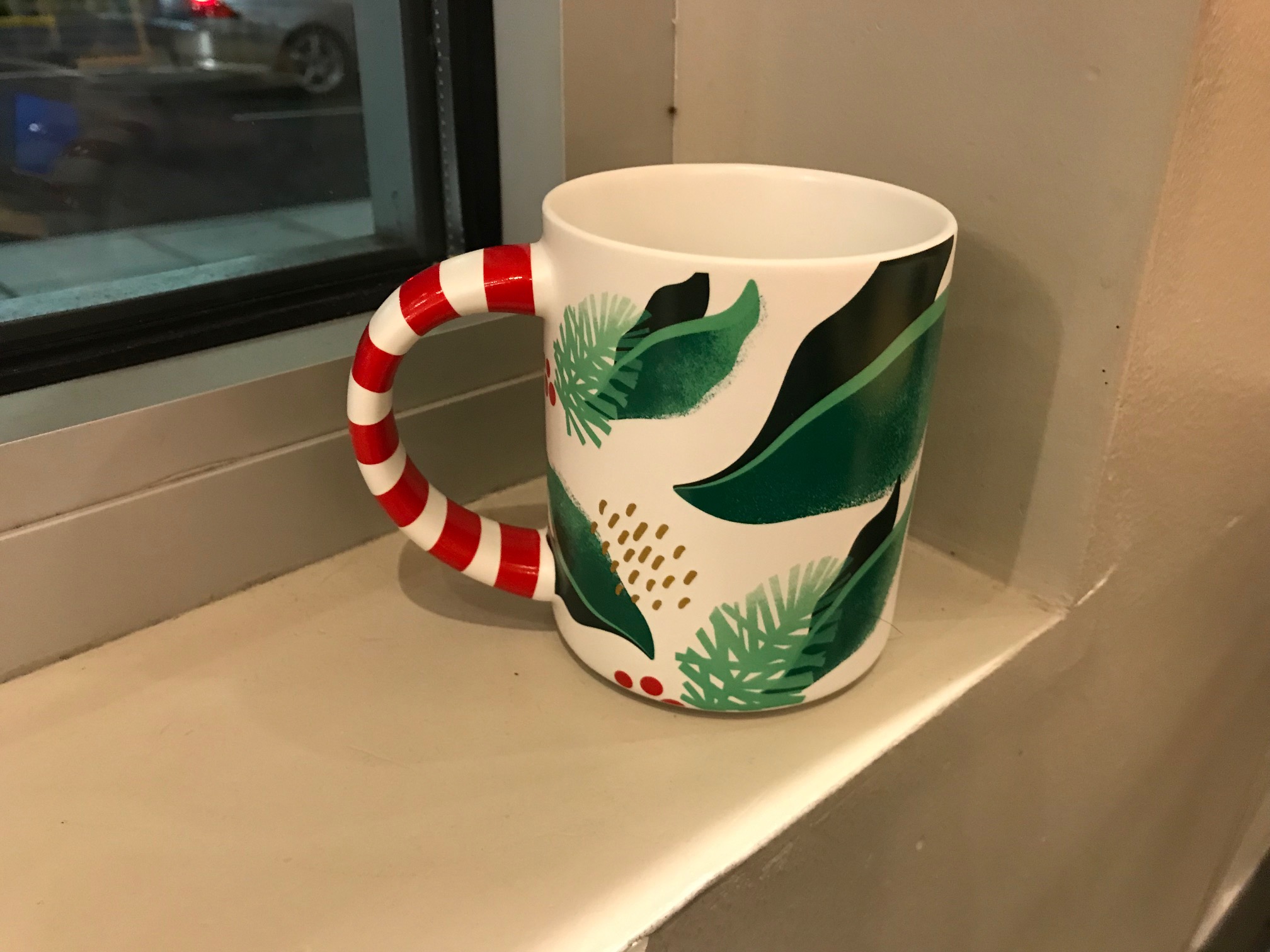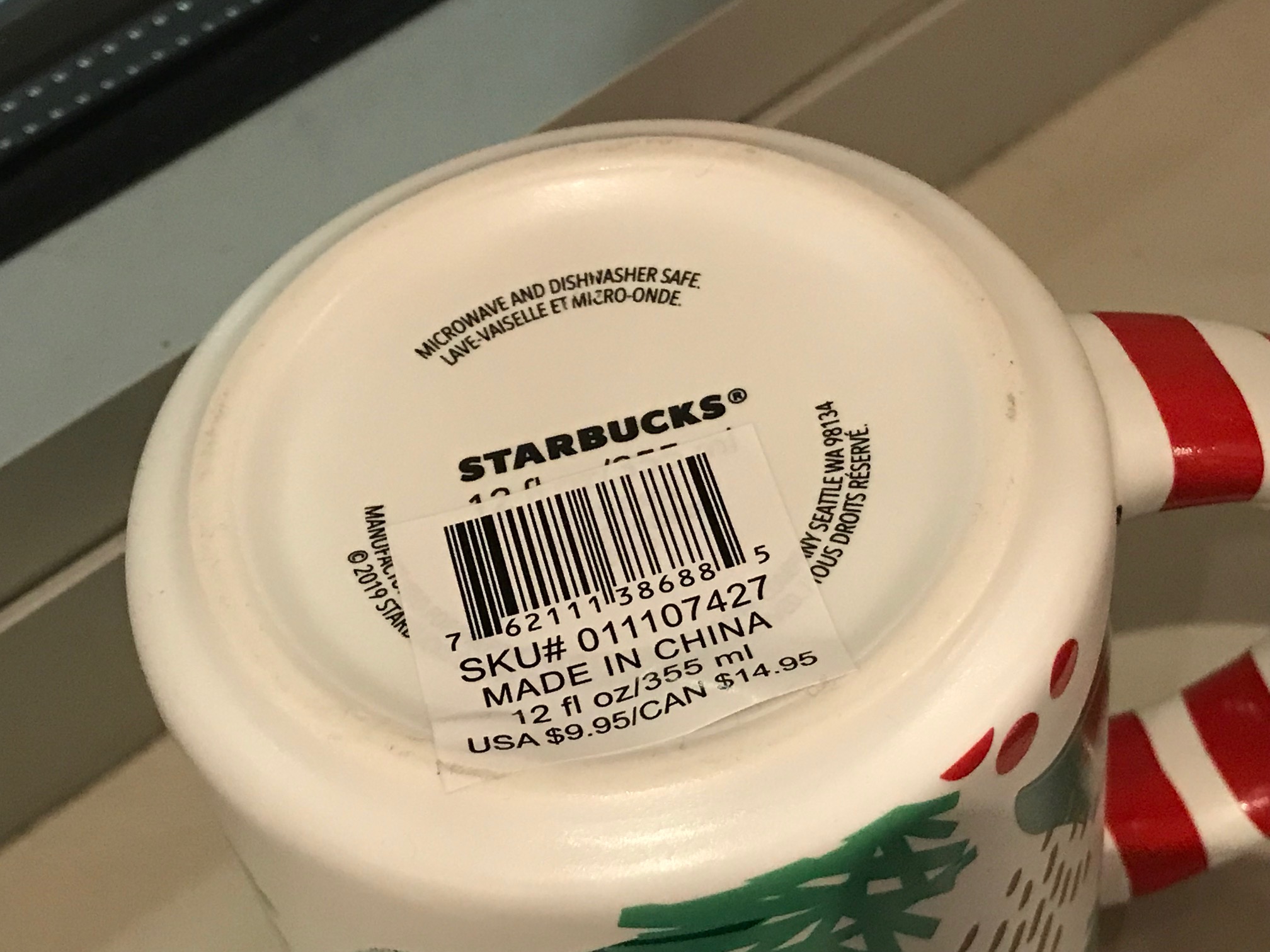How toxic is YOUR Starbucks Christmas mug? This one has 1,037 ppm Cadmium — a carcinogen (over 40 ppm is illegal*)

For those new to this website:
Tamara Rubin is a multiple-federal-award-winning independent advocate for childhood Lead poisoning prevention and consumer goods safety, and a documentary filmmaker. She is also a mother of Lead-poisoned children (two of her sons were acutely Lead-poisoned in 2005). Since 2009, Tamara has been using XRF technology (a scientific method used by the U.S. Consumer Product Safety Commission) to test consumer goods for toxicants (specifically heavy metals — including Lead, Cadmium, Mercury, Antimony, and Arsenic). All test results reported on this website are science-based, accurate, and replicable. Items are tested multiple times to confirm the test results for each component tested. Tamara’s work was featured in Consumer Reports Magazine in February of 2023 (March 2023 print edition).
Please read the full piece to understand why this is likely illegal in Washington state (and the country of Denmark, too)!
Another toxic Starbucks mug.
How much Cadmium did this mug have exactly?
When tested with an XRF instrument, this 2019 candy cane-handled Starbucks brand mug (purchased new at a Starbucks store in Washington state in 2019) had the following readings:
On an exterior part with the scope centered on the red glaze:
- Cadmium (Cd): 1,037 +/- 55 ppm
- Barium (Ba): 509 +/- 83 ppm
- Selenium (Se): 453 +/- 49 ppm
On the white glaze on the interior of the mug:
- Barium (Ba): 410 +/ 79 ppm
All tests were done for a minimum of 60 seconds each using a freshly calibrated Niton XRF instrument (an XL3T XRF testing in “Consumer Goods” mode). Tests were repeated multiple times on each component to confirm the results. All test results reported on this website are science-based, accurate, and replicable.
To see another high-toxicant (high Lead in this case) item from the Starbucks 2019 holiday collection, click here.
To read more about the concern for heavy metals in vintage and new pottery items, click here.
New to my website? Click here to learn a little more about who I am and how I test consumer goods for heavy metals!
How much Cadmium is “too much” Cadmium?
*Why do you say this is “illegal?”
For context, the amount of Cadmium considered unsafe (and illegal) in consumer goods in the country of Denmark is anything 75 ppm or higher. Ironically, the only other place on the planet that I am aware of that currently has a total Cadmium content regulatory limit (as can be measured by XRF technology) for consumer goods (other than “children’s jewelry”) is the State of Washington — where this mug is for sale.
Important points/ considerations:
- My understanding of Washington state’s regulation is that they consider “consumer goods intended for use by children” toxic (and illegal) when the XRF-detectable Cadmium level exceeds the regulatory threshold of 40 ppm.
- In my understanding, the “glaze” of a product (like a mug or ornament) can be interpreted to be a “component” of the product.
- It is also my understanding of this regulation that this is inclusive of dishes (items that may possibly — under normal anticipated use — be used to feed children), as Washington is one of the few public entities that acknowledges that children use dishes, too (i.e. dishes can not, by some ridiculous mental gymnastics, assumed to be “solely intended for use by adults,” which is the U.S. Federal “perspective” that makes it possible for dishes to “comply with all U.S. regulatory standards” even when they have high levels of Lead, Cadmium, or other toxicants!).
- Regardless of the current marketing or the ostensible “target demographic” for this item, it is realistically likely to be used by many children — simply due to the Christmas/ candy cane theme of the product.
Next Steps — running this by the State of Washington on Monday:
I am going to be sharing this (and a few other related articles including test results of Starbucks-branded items with high levels of Cadmium in them [items currently being sold in the State of Washington by Starbucks — a company founded and headquartered in, plus proudly associated with, the modern cultural history of Seattle]) with the relevant Washington State regulatory agencies to get their take on this (and see if they actually consider this and the other items illegal, based on their regulation, or if they feel these items are “not intended for children”/ “not likely to be used by children” and, as such, their regulatory limits for Cadmium are not applicable). Stay tuned for the results of this inquiry!
To reiterate and clarify: Based on the research I have done on the subject, it is also my understanding that Denmark and Washington State Cadmium standards are for (XRF-detectable) total Cadmium content (not leach-test results — which is a different standard/ different type of testing). If I learn that this is incorrect after discussing these items with the State, I will report back here and update the piece accordingly. You can read a summary of the various Cadmium-focused regulations in this article here.
Potential loopholes that I anticipate Starbucks might claim for this and other similarly toxic items (if they even bother to respond to this concern, which I don’t expect them to — since they have not responded to any of my findings of Lead and Cadmium in their products over the past 10+ years!):
- Starbucks will likely say the item is “not intended for use by children.”
- Starbucks will likely assert that “in normal use, an item like this can not be anticipated to be used or handled by children.” (Ha!)
- Starbucks will likely assert that the Cadmium is “‘only’ on the outside of the cup, and therefore is not a concern.”
- Starbucks will likely state that the amount of Cadmium “complies with regulatory standards when you take into account the full weight/ volume of the cup” (the weight of the high-Cadmium glaze relative to the entire volume of the cup), including the ceramic substrate — i.e. Starbucks will likely state that when tested via digestive sampling of the full cup (pulverization and testing in a laboratory), the Cadmium levels are “in compliance with all current regulatory standards.”
- Starbucks will likely state that there is “no leach hazard with this item (for Cadmium or other toxicants) and, as such, it is in compliance all relevant regulatory standards.”
- Starbucks will likely assert that “the glaze should not be considered to be a separate ‘component’ of the product.”
Regardless of whether or not it turns out that regulatory agencies agree that these items are actually illegal (simply by virtue of the [simple/ indisputable] fact that they contain high levels of Cadmium and are being sold in Washington State), the amount of Cadmium found in the handle of this cup is — by any measure — a whole lot of a known carcinogen (Cadmium has been conclusively determined to cause cancer) to be in a food-use item (a mug). Especially a mug that children will definitely be drawn to (because of the candy cane handle), regardless of whether or not it could be argued it was sold or marketed as an item intended for use (only) by adults.
To see more mugs with Cadmium that I have tested, click here. (Yes I actually have a category for this on the website!)
For Lead-free/ non-toxic mug choices, click here.
Thank you for reading and for sharing this work.
As always, please let me know if you have any questions!
Tamara Rubin
#LeadSafeMama 


Never Miss an Important Article Again!
Join our Email List










This is interesting and you should report it to the FDA as they can ban its import into the USA. I thought that the US and China had some kind of agreement on ceramics with color such as they were checked in China to comply with US laws on these pigments.
In the future, please post a picture of the XRF spectrum so that expects like me can verify your assignment of the lines and interpretation.
Hi Gene,
Thanks for commenting! Will see what I can do.
Tamara
Unless it says “lead free” there is usually some amount of lead in the glazing, even of stoneware. So much we use unknowingly that poisons us . . .
Do you know of any safe electric waffle makers?
Hi Johnny! Thanks for commenting.
In more than ten years of testing consumer goods I have not yet tested a single electric waffle maker that was negative for Lead. We use a cast iron (uncoated) stove-top one (like grandma used to use!)
Tamara
What mug we should use then? Please, advise!
Hi Elena!
Start here: https://tamararubin.com/2018/01/recommended-mugs/
and then also look up “Lead Free Mugs” using the search bar on the blog – there are quite a few in the Lead-free and Lead-safe categories. Here are two to start with:
1) https://tamararubin.com/2019/12/bennington-potters-blue-glazed-ceramic-coffee-mug-lead-free-really-great-gift-choice-31-00-including-shipping/
2) https://tamararubin.com/2019/06/talk-show-set-mugs-series-used-by-hosts-guests-ellen-show-lead-free-cadmium-free/
Tamara
Hello
Which substances make cadmium leach? Is under 40 ppm ‘safe?’ We had an internal component of a blender tested that came back with 10 ppn cadmium.
Thanks!